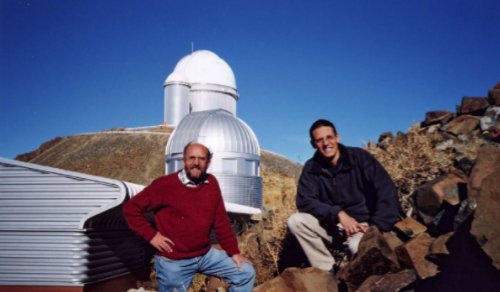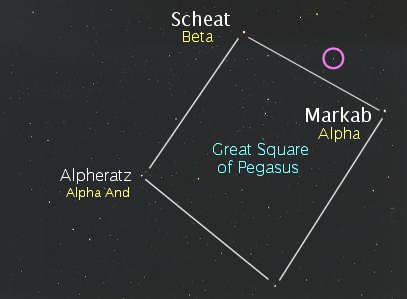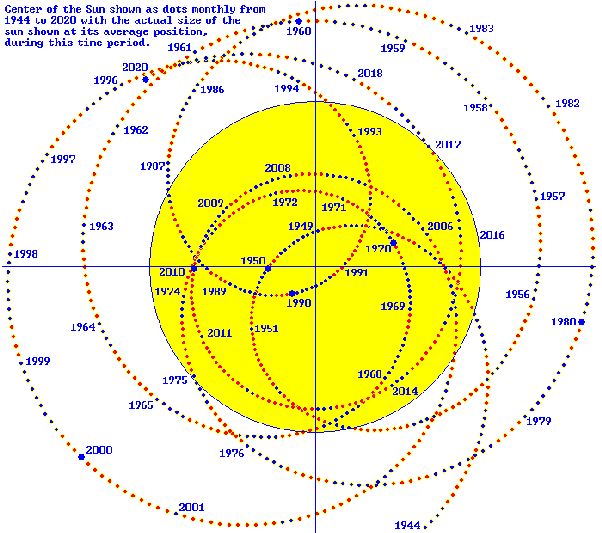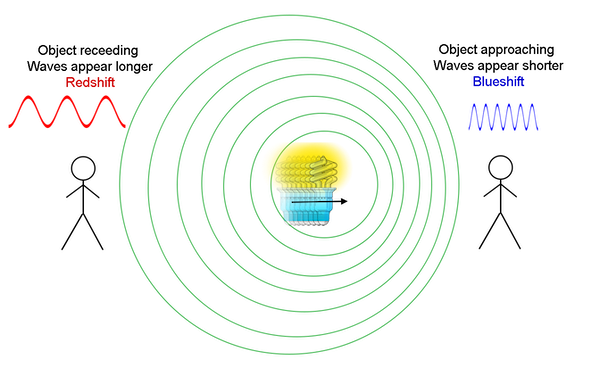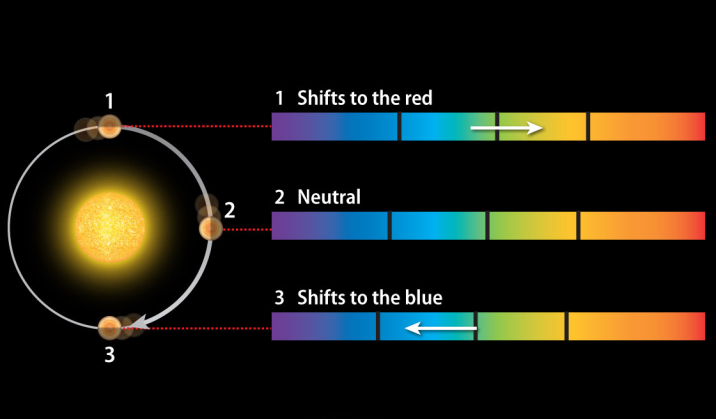Julian Date: 2459045.16
2019-2020: CLXXVII
THE DAILY ASTRONOMER
Tuesday, July 14, 2020
Remote Planetarium 64: Exo-Planets I - The "Wobble" Method
As of today (14 July 2020) astronomers have discovered 4282 planets (3164 planetary systems). Within the next decade, that number will most assuredly exceed 10,000. Based on these detections, we can assume that our Milky Way Galaxy alone might contain as many as one trillion planets, millions of which could possibly be life-bearing. Presently, those numbers are merely conjecture: optimistic extrapolations derived from these early findings. All the same, however, these predictions bode well for those cheerful sort who believe that our Universe teems with life.
Today we begin a sequence pertaining to the detection of these exo-planets. How have astronomers managed to discover such small objects in orbit around stars so remote they appear merely as pinpoints of light? The answer to this question is multi-faceted. Astronomers have developed multiple exo-planet detection techniques, some of which are only theoretical as they haven't yet yielded any exo-planet discoveries. Our focus will be on the principal methods astronomers have employed in a pursuit that, until relatively recently, many scientists dismissed as futile.
Astronomers Michel Mayor and Didier Queloz.
The first technique we'll discuss was also the one first used to detect an exo-planet around an active star.* Astronomers call it the "wobble method." Astronomers Michel Mayor and Didier Queloz were the first to find an exo-planet around a star. In 1995 they announced the discovery of a massive planet around the star 51 Pegasi, a faint star to the east of the Great Square of Pegasus. (They shared the 2019 Nobel Prize in Physics for this discovery.)
51 Pegasi b, the first exo planet discovered around an active star orbits the star 51 Pegasi, a star within the constellation Pegasus. A pink circle indicates the star in the image above. 51 Pegasi b is about half as massive as Jupiter and completes an orbit around its parent star every 4.2 days. This planet is officially named 'Dimidium,' the Latin term for half because it is half the mass of Jupiter. The initial recommendation to name it "Bellerophon," after the reckless youth who tamed Pegasus, was rejected by the IAU (International Astronomical Union) who characteristically opted for the more prosaic alternative.
As its name implies, the "wobble" method involves detecting wobbles in a star induced by any attendant planets. According to Newton's Universal Law of Gravitation, every massive objects exerts a gravitational pull on every other massive object. The magnitude of the force a massive object exerts on another massive body depends on its mass and separation distance. The more massive the object, the stronger the pull. The greater the separation distance between two massive objects, the weaker the pulls becomes. Even though a star is far more massive than any planet in orbit around it, the planet will still "tug" on the star. Consequently, the barycenter, or center of gravity," will shift away from the star's core. The extent of this displacement depends on the mass of the planet and its distance, as we would expect from our knowledge of Newton's gravitational laws. The star will therefore also revolve around this barycenter, making it appear to "wobble" periodically. The size of the wobble relates to the separation between the star's nucleus and the system's barycenter.
Below we can see a graphic pinpointing our solar system's barycenter between 1944 and 2020.
We can see that at times the barycenter is located within the solar interior and at other times is well outside of it. [The variation relates to the changing planetary configurations. For instance, when Jupiter and the other as gas giant planets are located along one side of the Sun, the barycenter will be "pulled" well outside the Sun. When Jupiter is on the opposite side of the Sun relative to the other gas giant planets, the tugs will almost cancel out and the barycenter will be nearly at the Sun's core, such as in 1990.]
The barycenter is currently outside the Sun and has been since 2017. Any alien astronomer observing the Sun might actually observe our parent star's wobble due to the barycentric displacement. However, they would not "see" the wobble. The wobble method relies on observations of a star's spectrum.
One can think of a spectrum as a rainbow. If light emitted by a star were to be separated into its component colors, a sequence such as the one above would appear. The spectrum above is from the Sun. Notice the series of dark lines. Those are absorption lines. They form because atoms within the Sun's outer layers absorb light at different wavelengths. Recall that we saw spectra in early June when we discussed the H-R Diagram.
The image above shows a spectrum as it appears at rest. However, if the Sun were to move away from us or toward us, the lines within the spectrum would shift. If the Sun is moving away from us, the light waves would be elongated, which would increase the wavelength and decrease the frequency. If the Sun is moving toward us, the light waves would be compressed. The wavelengths would shorten and the frequency would increase.
We refer to this compression and elongation of waves as the "Doppler shift." You likely notice an audial version of this shift whenever you hear a siren. If the police car is approaching you, the sound waves are compressed and the pitch increases. When the car is next to you, you hear the same normal pitch you'd hear were the car at rest. When the car is moving away from you, the waves are elongated and the pitch decreases. The Doppler effect occurs when the speed of the wave emitting source is fast enough to affect the speed of the waves, themselves.
In our simplified version, when a planet is between us and distant star, the star will be pulled toward us. Consequently, the star's light waves will be compressed and the star's spectrum will shift toward the blue end of the spectrum. Because blue light is more energetic than red light, its wavelength is smaller and its frequency higher. For this reason, light compressed by the approach of an object is referred to as blue-shifted. When a planet is moving along the far side of the star relative to us, the star is tugged away from us and its light is elongated. The wavelength increases and the star's light is said to be red-shifted because the wavelength of red light is longer than that of blue light.
Astronomers have found hundreds of planets using this technique, which is also called the radial-velocity method. Radial velocity refers to the component of a celestial object's velocity along our sight line. The limitation of this method pertains to the planets' masses. Only large planets will induce measurable wobbles in their parent stars. For instance, Jupiter's gravitational influence on the Sun exceeds the combined influence of the other planets. As massive as Earth might feel to us, its effect on the Sun's barycenter is negligible.
Fortunately, astronomers have developed other planet detection techniques, such as the transit method that we will discuss tomorrow.
*In 1992 astronomers Dale Frail and Aleksander Wolszczan announced the discovery of two planets in orbit around Pulsar PSR 1257+12** , located about 2,300 light years from Earth within the constellation Virgo. These were the first exo-planets discovered. These findings are often forgotten because the planets are in orbit around a stellar remnant, a rapidly spinning neutron star. One might wonder: how can a pulsar possibly have planets? The leading theory posits that some of the debris cast off by the supernova explosion that destroyed the highly massive star quickly coalesced into planets that soon established stable orbits around the pulsar. It is now known that this system contains at least three planets. Alien-seekers needn't bother scanning this system. The chances of life existing on a pulsar planet is about equal to the chances of finding a lush botanical garden inside a nuclear reactor.
**Just for morbid fun: This pulsar has been assigned a proper name: Lich. Aficionados of fantasy literature and Dungeons and Dragons might recognize the term "Lich," in reference to "undead" creatures such as desiccated corpses or skeletal creatures that a necromancer reanimated. The name is certainly appropriate as a pulsar is merely the dead remnant of a star as opposed to being real star, itself.
_______________________________________________
SKYWATCHING TIP: Jupiter at opposition
This is the best time to seek out Jupiter! Jupiter is at opposition today, meaning that Earth is passing between the Sun and Jupiter. The fifth world will rise at sunset and be visible all night. Planets are opposition are also at their brightest. At magnitude -2.7, Jupiter outshines all the night sky stars and planets, save Venus. One will find Jupiter rising in the southeastern sky within the constellation Sagittarius,
________________________________________________
To subscribe or unsubscribe from the Daily Astronomer:


